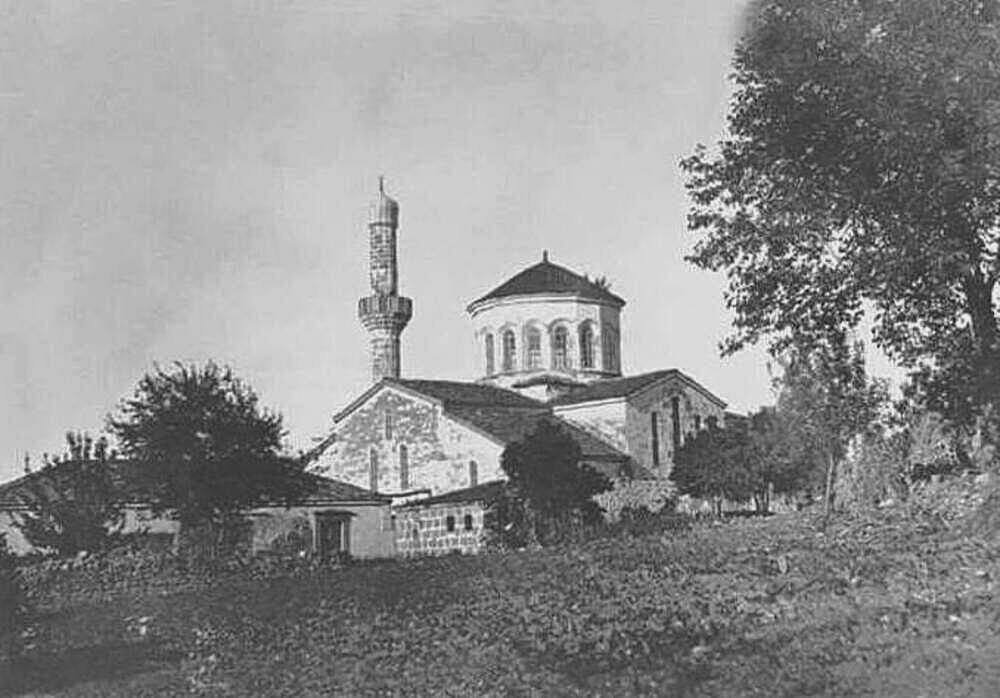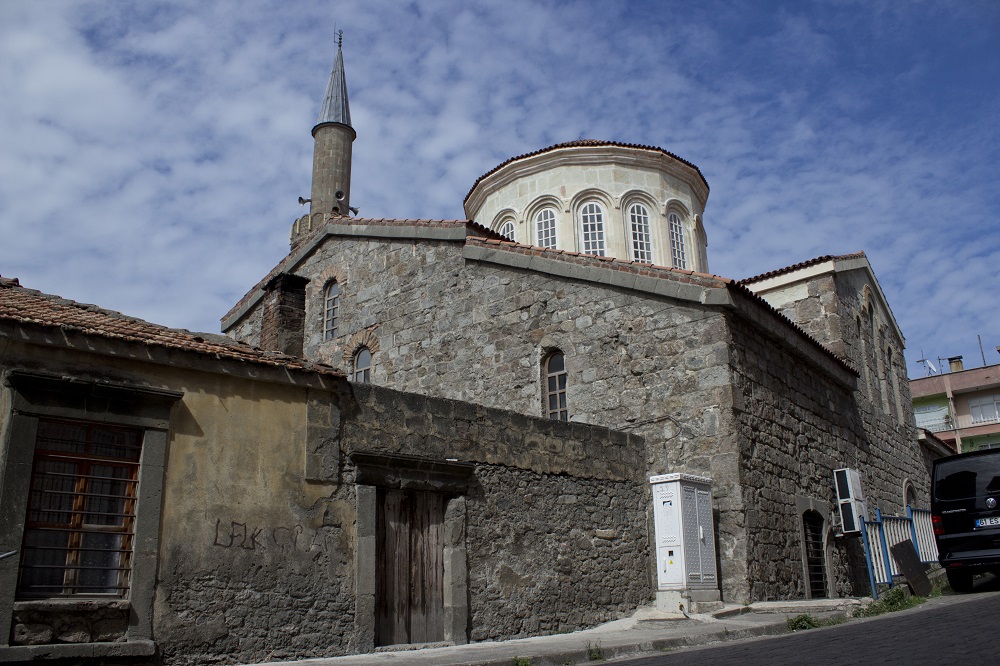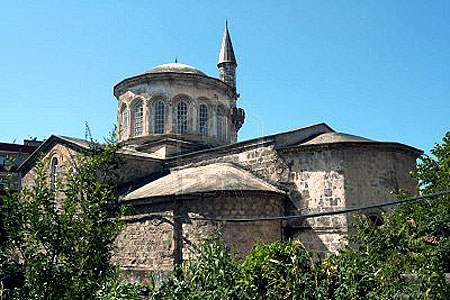
Saint Evgenios of Trabizond as a mosque. 1945. Credit: Hasim Karpuz archives.
The church of Saint Evgenios of Trebizond (Tr: Trabzon) is a magnificent church which once represented the center of the city's ecclesiastic, ethnic and cultural life. When the Turks seized Trebizond in 1461, Fatih Sultan Mehmet II re-named it Yeni Cuma Camii (New Friday Mosque) because it was here that the conqueror performed his first Friday prayers. Heath Lowry states that Saint Evgenios functioned as a church until at least 14861.
There is some conjecture as to when Saint Evgenios was built. George Finlay visited Saint Evgenios in 1850 and states that it was burnt in 1340 and was rebuilt by Emperor Alexios III. Xiphilinos and Lazaropoulos give some evidence towards a church or monastery of Saint Evgenios existing around the 9th or 10th century. Selina Ballance however postulates the following:
There was an early church on the site, and it was endowed in 1021/22. This church was still standing in 1223. Saint Evgenios was rebuilt as a basilica in 1291. Saint Evgenios was repaired and enlarged after 1340 by Alexios III.2

Rear view of the Hagios Eugenios / Yeni Cuma Camii in Trabzon, Turkey. Source.
The church measures 28m in length, 16m in width and 11m in height and has a dome without a balcony. Internally the church was divided into three vaulted apses which end in arches. The side apses were narrow and lower than the central apse. It's possible that the central entrance to the church had a porch which was destroyed by the Turks and was converted to a window. The entrance of the church was through the door of the north side. The beautiful frescoes that used to adorn the church were later covered by dust and Turkish decorations.
The church housed the relics of Saint Evgenios and his counterparts; Canidius, Valerianus and Akylas in a silver urn which is located beside the right hand beam of the temple - where the icon of Saint John Prodromos was located - and the south end of the church towards the arch of the southern apse.

Around the 11th century the church of Saint Evgenios was not only well known in Pontus but in the entire East. In the first half of the 11th century the Emperor of Byzantium Basil II the Bulgar Slayer came to pray at the church. The church held 2 festivals each year; one on the 21st of January, the feast day of the martyr Saint Evgenios, and the 24th of June the feast day of of his birthday. As with the church of Chrysocephalos, the church of Saint Evgenios also held formal ceremonies in its yard such as Emperors' coronations and weddings. The Emperor of Trebizond Alexios III was crowned at Saint Evgenios and it was here also that he was married to Theodora Catacouzinos.
The icon of Saint Evgenios came from depictions of Saint Evgenios from coins of Trebizond and also emperor's emblems which initially show him in military uniform and later on a saddle with a cross in his hand, ready to defend his town.
From all the treasures and jewels of the church, the only thing that has been saved is a religious manuscript which is housed at the church of Vatopedi in Ayion Oros, Greece. It has amazingly detailed Byzantine graphics. One of these is the cycle of the 12 months - a masterpiece of Byzantine art.
Primary Source:
Encyclopaedia of Pontian Hellenism. Malliaris Paedia.
Other references:
1. Trabzon's Yeni Cuma Camii. Why is it called this? Heath Lowry. Vol 3, 1975. p100
2. Byzantine Monuments and Topography of the Pontos. Dumbarton Oaks. p224.